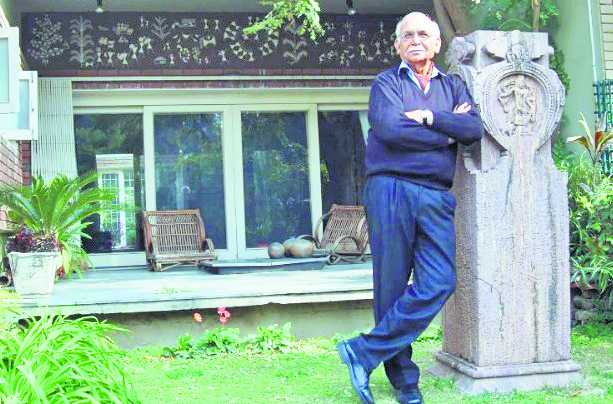CHANDIGARH
Renowned Indian art historian and esteemed authority on miniature paintings, Brijinder Nath Goswamy, passed away last week in Chandigarh after an extended period of poor health. He was 90 years old.
Born in August 1933, Goswamy, fondly known in art circles, was honoured with the Padma Shri and Padma Bhushan awards. Often referring to himself as an “accidental art historian,” Prof Goswamy gained recognition for his ground-breaking contributions to the study of Pahari paintings, authoring over 26 books during his illustrious career. Banwari Lal Purohit, Governor of Punjab and the Administrator of UT, Chandigarh, extended his deepest condolences on the passing of Dr B.N. Goswamy, an eminent figure in the realm of art history.
In 1958, he made a significant decision to depart from the prestigious civil services, a move that caused upheaval within his family. A gift of M.S. Randhawa’s book on Kangra Valley paintings from his friends marked the beginning of his journey into the realm of Indian miniature paintings. Immersing himself in the field, Prof Goswamy pursued his PhD on the social backdrop of Kangra painting, spending three immersive years in Kangra’s villages, meticulously studying, researching, and exploring.
During his extensive travels across the Kangra hills, he familiarized himself with the Takri Pahari script and developed a methodology to analyze and reconstruct family lineages and artistic styles by deciphering inscriptions on miniature paintings and historical records. Similar to the gharanas in Indian music, he focused on familial styles, scrutinizing techniques, narratives, and compositions in great detail.
Prof Goswamy emphasized his reliance on historical training and intuition in navigating his chosen path, stating, “As a researcher and teacher, you have to go into the field, read, study, interact with people, learn new languages, and understand your roots. What’s most important is to have a richness of mind.”
His influential essay, “Pahari Painting: The Family as the Basis of Style,” published in Marg, highlighted how painter families shared distinct styles, advocating against categorizing miniatures solely based on the courts commissioning them, whether Kangra, Guler, or Chamba.
His renowned works, “The Spirit of Indian Painting” showcasing 101 miniature masterpieces between 1100 and 1900, and the exhibition “Wonder of the Age, Master Painters of India, 1100-1900,” at the Metropolitan Museum of Art in New York, unveiled a fresh dimension of Indian art to the global audience.
As a Professor Emeritus of Art History at PU, Chandigarh, Prof Goswamy lamented the absence of a strong archiving and preservation tradition in India. He ardently believed in expanding museum collections and engaging more people with innovative ideas, emphasizing, “The highest aim of art is to cultivate your mind.”
In his final lecture in Chandigarh on October 26, he explored his latest publication, “The India Cat: Stories, Paintings, Poetry and Proverbs,” delving into Indian fables and miniature paintings that portrayed cats as companions or discreet observers in palaces. Diwan Manna, Chairperson of Punjab Lalit Kala Academi, hailed Prof Goswamy as a monumental figure in the art world, lauding his efforts in educating people about Indian art’s beauty, richness, styles, and vocabulary through lectures and presentations.

